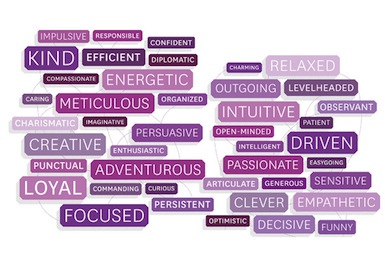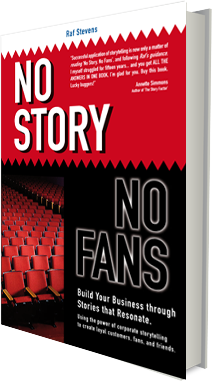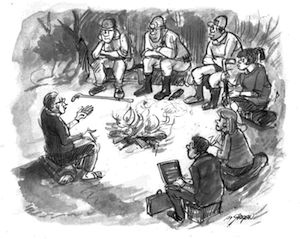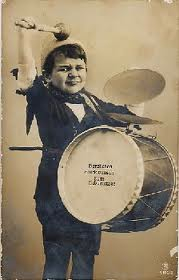Last week, I attended a workshop on Appreciative Inquiry, which I thought would be a little more focused than it was on using AI in the job search.
Appreciative Inquiry is not specifically a storytelling tool (and actually not a tool at all, but “a way of being and seeing,” as The Center for Appreciative Inquiry notes), but the kind of inquiry initiated during the process often results in storied responses. I know of at least one significant story practitioner who got her start as a follower of Appreciative Inquiry.
tool at all, but “a way of being and seeing,” as The Center for Appreciative Inquiry notes), but the kind of inquiry initiated during the process often results in storied responses. I know of at least one significant story practitioner who got her start as a follower of Appreciative Inquiry.
Since the workshop wasn’t exactly what I was expecting — but it stressed constructionism (“There are many realities out there, each constructed from a different view of the universe. They become real and palpable only when we put words to them”), I decided to construct my own expected reality from what I learned and see what I could learn about how AI might be useful in job search.
Appreciative Inquiry for building a positive view of work life. In Discovering Your Positive Work Self Through “Appreciative Inquiry”, Karma Kitaj, PhD, particularly focuses on those who have been laid off and are struggling to find a new job. Those folks can ask themselves questions like these:
Describe a time(s) in your life that you remember as a high-point experience, when you were totally engaged and felt alive and vibrant.
What do you value most about yourself and your work?
What are the factors that give life to the organization where you work now or most recently worked?
Imagine your work life in a year from now, exactly as you’d like it to be, your dream job. What have you contributed to make this dream job come true?
In sum, the point of such inquiry is this:
What is the positive story that you can create about your life circumstance today? What do you appreciate about yourself, about the people you come in contact with, about the environment you live in, about all that you value? Expand upon that narrative and live it today.
One company, ODC Associates, even provides appreciative outplacement and career-transition services in which “Our appreciative approach (built on the Appreciative Inquiry change model) not only helps those who are departing but ensures that corporate survivors can move forward productively with the knowledge that their former colleagues were treated with respect and fairness.”
Appreciative Inquiry for conducting a values-based job search. In How to Do a Values-Based Job Search, Nancy Archer-Martin suggests that job-seekers focus on values and strengths and tell stories in interviews to spotlight strengths.
Appreciative Inquiry for “staying connected to your true direction and finding the right job.” That’s the suggestion of Duncan Ferguson in Appreciative Inquiry. “I believe the AI approach should also be taken by individuals as they look at their jobs and careers. Understand what’s right about your skills, competencies, characteristics and values,” writes Ferguson, who also offers some useful resources on AI.
Appreciative Inquiry for “reconnect[ing] with the core elements of who we are and what makes us special.” Dan Shepard uses AI in coaching senior executives in transition, noting in Appreciative Inquiry for Career Development:
The AI process, when integrated with more traditional executive self assessments, which are focused on identifying individual motivators, interests, personality preferences, values and dreams, is very productive at getting to the heart of who someone is and enabling them to find their “wow” position.
Appreciative Inquiry for self-assessment and constructing positive accomplishment stories. AI is clearly a great way to get at the career directions that will really make us happy, as you can see from these sample questions that came from Dr. Cal Crow’s handout from the workshop I attended:
- When have you been the happiest? What made that such a happy time?
- When have you felt the most productive?
- When are you at your very best? What’s going on when that occurs?
- Can you describe a situation when things went better than at any other time?
- What was special or different about this experience?
- What did you say or do to make this special?
- Who else was part of this? What did they say or do?
- What would it take to create a similar situation today?
These and similar questions would also be effective in brainstorming accomplishment stories that an individual could discuss in a job interview.
Appreciative Inquiry is often used with organizations — focusing on what the organization does well rather than on its problems — but many of the inquiring questions directed at organizations can be adapted for individuals. I have a pricey book on my Barnes & Noble wish list that offers lots of sample questions: Encyclopedia of Positive Questions Volume One: Using Appreciative Inquiry to Bring out the Best in Your Organization. A Google search on Appreciative Inquiry questions also yields tons of inquiries.
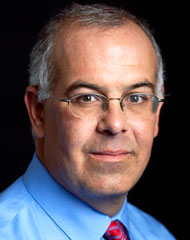 plans to write columns about them at Thanksgiving time, as well as post as many as possible online. Septuagenarians can send their stories to dabrooks@nytimes.com.
plans to write columns about them at Thanksgiving time, as well as post as many as possible online. Septuagenarians can send their stories to dabrooks@nytimes.com.


